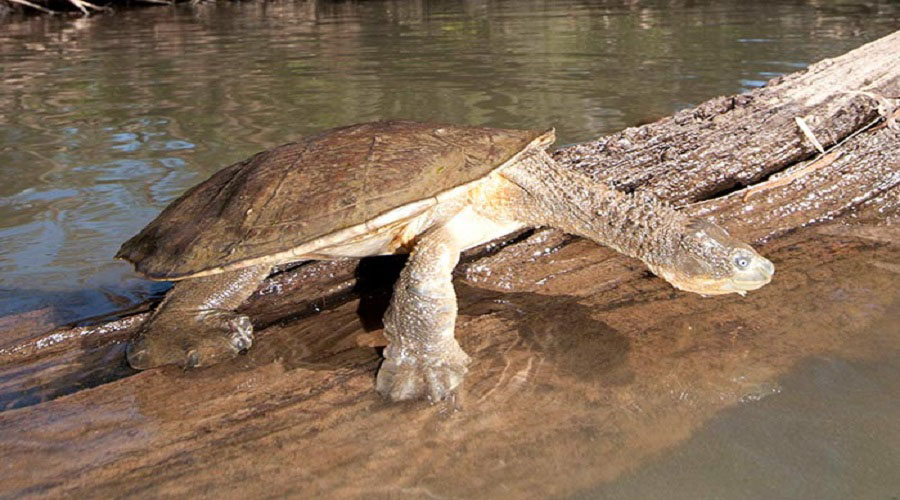Table of Contents
Approximately 180 million years ago, Gondwana, the vast supercontinent that once spanned the southern hemisphere, underwent a split, resulting in the formation of several separate landmasses. One of these breakaway landmasses consisted of what are now known as Australia and Antarctica. By around 30 million years ago, Australia had become fully detached and migrated northwards, establishing itself in isolation. As a combination of geological formations and changing climatic conditions, together with its physical disconnection from the rest of the world, the distinct flora and fauna endemic to Australia gradually evolved. The present-day Australian ecosystem boasts a remarkable feature of over 80% of the country’s plant, mammal, reptile, and frog species being found exclusively within its own borders, making them unique to the world.
Fitzroy River Turtle
The freshwater turtle found exclusively in the Fitzroy Basin of south-eastern Queensland has gained a reputation as a peculiar creature due to its ability to breathe through its backside, aptly earning the title of a “bum-breather”. This unique adaptation allows the turtle to stay submerged for an astonishing 21 days to forage and evade predators. Unfortunately, feral animals including foxes, cats, and pigs, coupled with water pollution, poor visibility, and sedimentation, have resulted in it being classified as “Vulnerable” on the IUCN list of threatened species.
Cassowaries are able to utilize their toe daggers most effectively by leaping into the air feet first, allowing their sharp claws to slice down towards their intended target. These birds also possess impressive speed, capable of running up to 50 km/h even through densely forested areas. Additionally, they exhibit strong swimming abilities, able to navigate through wide rivers and even swim in the open sea. It is generally advised to avoid being pursued by a cassowary, given their formidable physical capabilities.
Australian Southern Cassowary
A modern ‘dinosaur’ weighing 60 kilograms with lethal claws is an intimidating sight. However, the fear factor increases when one realizes that it is capable of leaping 1.5 meters in the air. Interestingly, cassowaries can jump feet-first in order to effectively utilize their toe daggers. This allows their claws to slash downwards in mid-air towards their intended target.
This particular animal displays exceptional abilities in both sprinting and swimming. Its top running speed of 50 km/h while navigating dense forest terrain is impressive, as is its skill in crossing wide rivers and swimming in the sea. Clearly, being pursued by this animal would be a dangerous proposition.
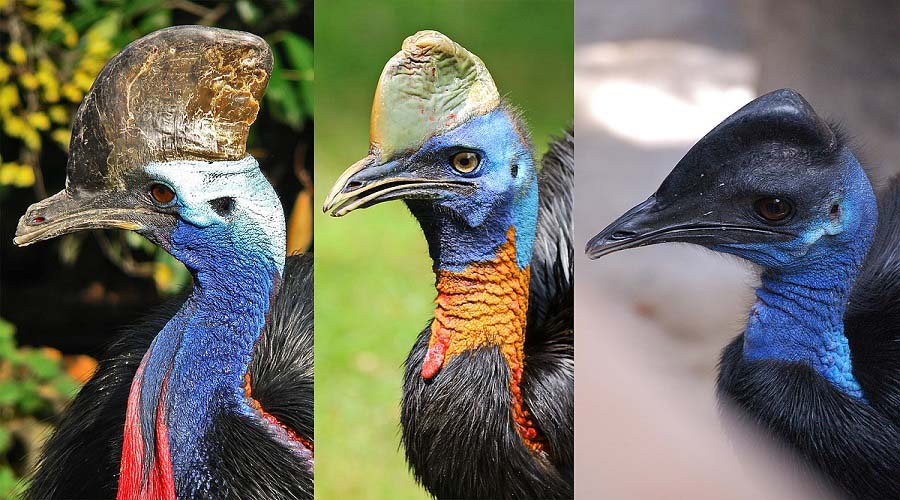
Australian Southern Cassowary
Saltwater Crocodile
The Saltwater Crocodile, also referred to as Estuarine Crocodile, is an exceptionally skilled predator with unique evolutionary adaptations, rendering it nearly perfect in its hunting abilities. This species commands fear and respect as a ferocious expert hunter. It boasts the title of the world’s largest reptile, with adult males growing up to 6 meters in length and weighing between 1,000 to 1,200 kilograms.
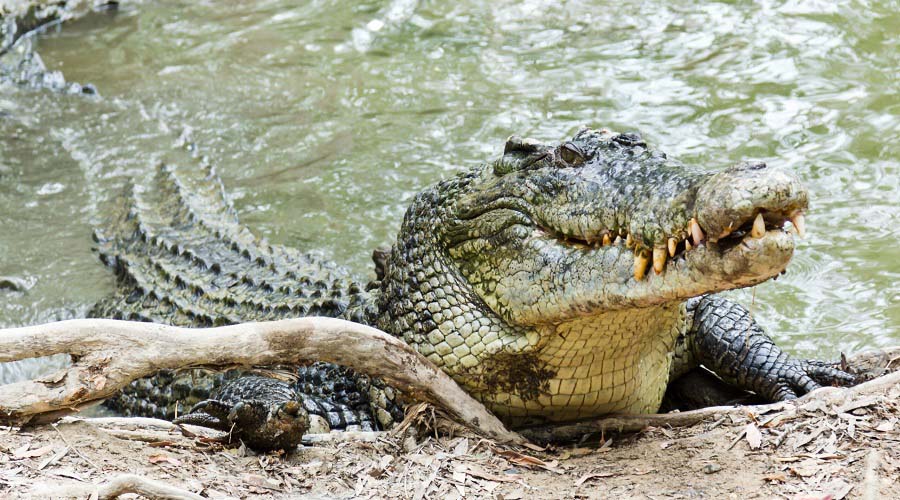
Saltwater Crocodile
It is a commonly overlooked fact that crocodiles, due to their unique biology, are incapable of sweating in order to regulate their body temperature. As a result, they depend on thermoregulation to perform this vital function. To prevent overheating, they will either submerge themselves in water or simply lie still with their jaws open, facilitating cool airflow across the skin in their mouth. This is the reason why one can often observe these creatures basking under the sun with their mouths wide open. The process of thermoregulation plays a critical role in various physiological processes such as digestion and movement.
Mistletoebird
The Mistletoebird’s critical life cycle heavily depends on its unique pre-poop dancing and bum wiping routine, which is closely linked with its specialized diet as a native bird species.
Upon consuming mistletoe berries, these charming red-breasted birds engage in a bodily twisting motion before deliberately applying their excrement onto the branch where they are perched. Due to the unaltered state of the seeds within the berries, they possess inherent adhesive properties which remain potent even after passing through the bird’s digestive system. As a result, these sticky seeds adhere to the branch and facilitate the growth of the mistletoe plant.
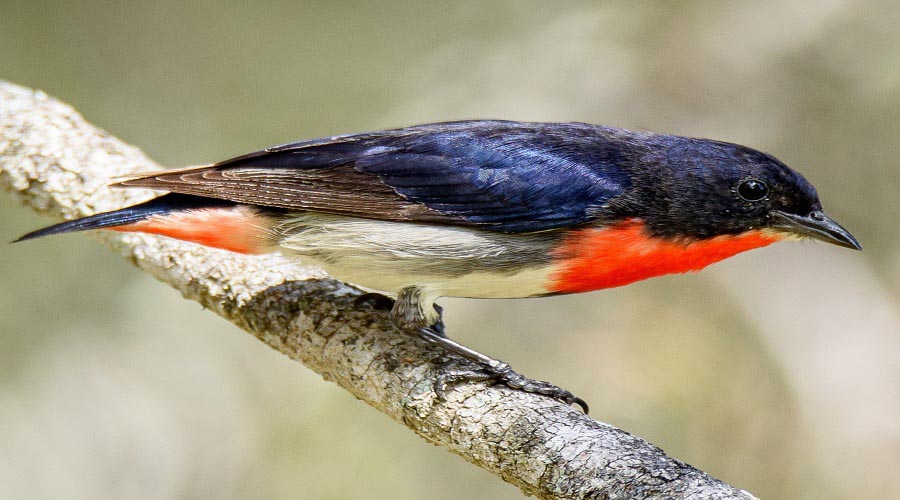
Mistletoebird
The existence of the parasitic mistletoe is dependent on its ability to grow on high branches of other trees, thereby establishing a symbiotic relationship wherein both the bird and the host plant can thrive.
Tasmanian Devil
The Tasmanian Devil, an animal that was once prevalent throughout mainland Australia, is now restricted to the island of Tasmania. This nocturnal carnivorous marsupial plays a pivotal role in maintaining the ecological balance in Tasmania by performing natural pest control on introduced species that pose a major threat to the island’s native wildlife.
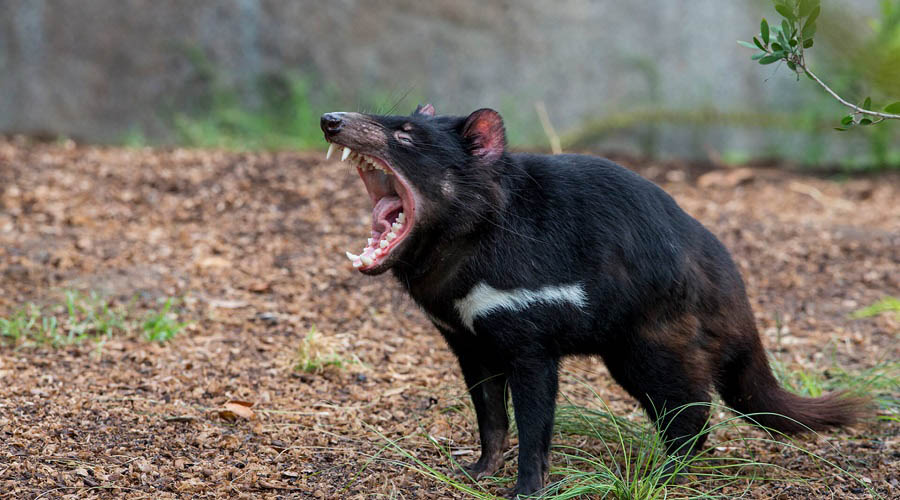
Tasmanian Devil
Being the only native animal to have effectively outsmarted introduced species like feral cats and red foxes, the Tasmanian devil obstructs the breeding of such animals in Tasmania. Consequently, the survival rate of native animals improves, which is a positive outcome.
Furthermore, it has the remarkable ability to promptly locate fox dens based on the extremely putrid odors emanating from them. All these characteristics of the Tasmanian devil highlight its contribution to controlling invasive species in Tasmania.
Regrettably, the species has been categorized as Endangered as per the IUCN Red List, citing a significant decrease of over 60% over the past decade, primarily attributed to the outbreak of a contagious facial tumour disease.
Short-beaked Echidna
The Echidna possesses several unique physical attributes, such as porcupine-like spines, a beak similar to that of a bird, a quoll-like pouch, and the ability to lay eggs like a reptile. Although it feeds its young with milk like other mammals, it lacks nipples, and the milk simply seeps from the skin in its pouch, which the puggle (baby echidna) then licks up.

Short-beaked Echidna
This unusual combination of characteristics is the reason why the animal was named after “Echidna,” a figure from Greek mythology who was known for possessing attributes of both snakes and women, much like the Echidna shares qualities of both mammals and reptiles.
Four distinct species of echidnas exist, with one of them being the Short-beaked Echidna that is predominantly found in Australia, specifically in regions like the Great Western Woodlands.
Laughing Kookaburra
The Laughing Kookaburra’s call at dawn and dusk is a familiar sound to many of us, yet its purpose may not be well-understood. Studies have shown that this bird, known for its close-knit family bonds, uses this call to proclaim its territory and ward off other kookaburras. Often, entire family units will join together in a chorus to emphasize their claim to the area. If competing families are present nearby, they may respond with their own vocalizations, indicating their own presence in the region.
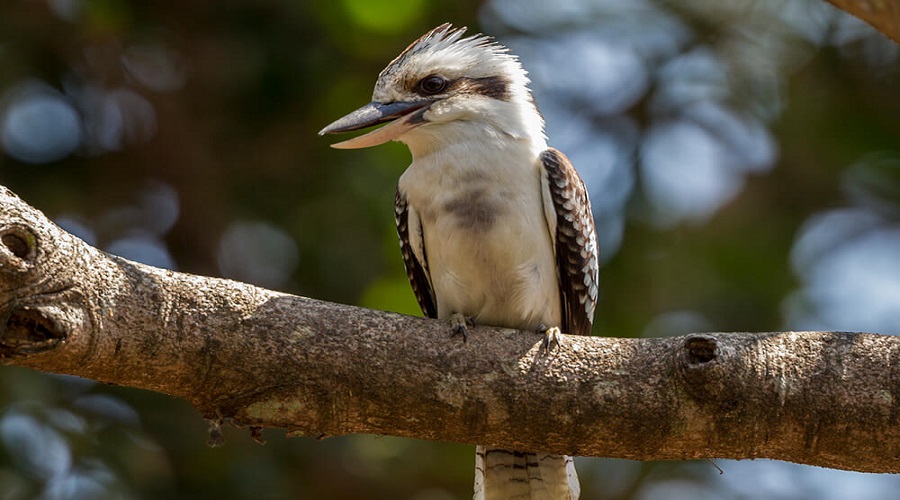
Laughing Kookaburra
Researchers have discovered that family members exhibit similarities in their laughter, which highlights the strong social ties that exist within family units. Furthermore, it has been observed that the kookaburra’s laughter is a social behavior, therefore, if it is kept in isolation in captivity, it will not laugh.
Numbat
The Numbat, a diminutive marsupial, is currently classified as an endangered species that inhabits the southwestern region of Western Australia. Owing to its small size, the Numbat faces predation from various animals such as feral cats, foxes, dingoes, and birds of prey. As the Numbat feeds exclusively on termites, and given that the termites are only active during the day, it is the sole diurnal marsupial in existence.
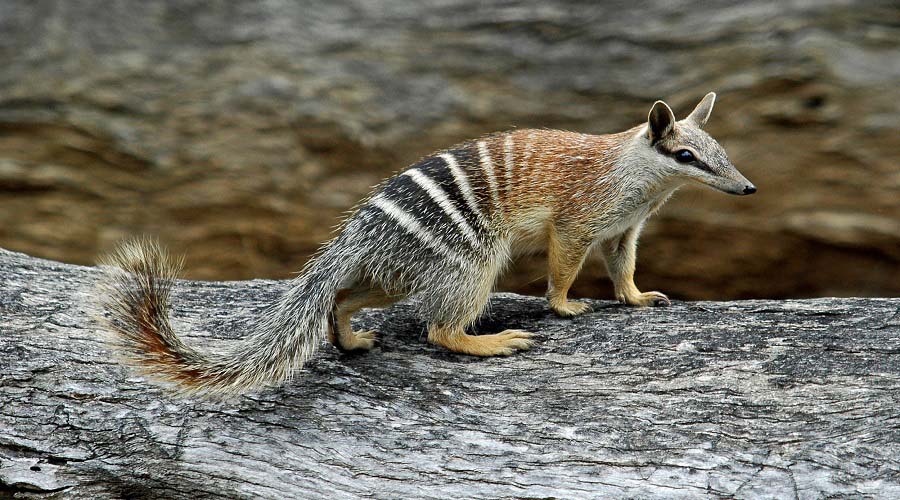
Numbat
The animal in question exhibits a survival strategy by taking refuge in hollow logs or underground burrows during the night. These venues are usually too cramped for its predators to enter, and it reinforces its security by utilizing its well-built, thick-skinned rump to block the entrance. This defensive mechanism not only showcases the animal’s adaptability but also highlights its ingenuity in safeguarding itself from potential harm.
Pellucid Hawk Moth
According to the Australian Geographic, the Pellucid Hawk Moth possesses a unique appearance that is a combination of characteristics found in moths, cicadas, and Glasswing Butterflies. Notably, within the Lepidoptera insect order, to which all butterflies and moths belong, only a scant number of species possess wings that lack visible scales and allow for transparency.
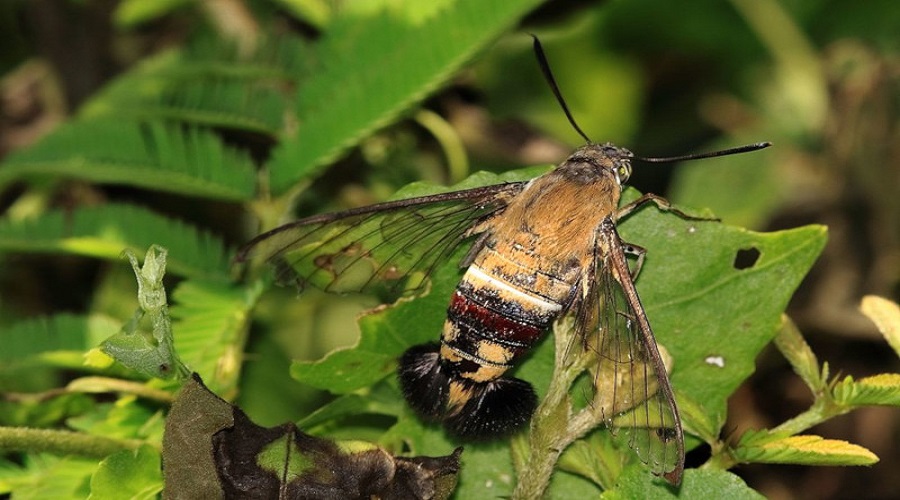
Pellucid Hawk Moth
The functions of coloured wings encompass multiple purposes such as communication, thermoregulation, defence, feeding and waterproofing. However, the transparency of wings has been noted to serve an interesting purpose, as it has been observed that these wings reflect a significantly lesser amount of light, almost 50% less than opaque ones. This renders the wings almost invisible while in flight, functioning like an invisibility cloak that provides substantial defence from predators.
Thylacine (Tasmanian Tiger)
The last known Thylacine, a species with distinctive tiger-like stripes along its lower back and tail, met a sorrowful demise more than 80 years ago at the Hobart Zoo, subsequently dignifying its popular nomenclature as the Tasmanian Tiger.
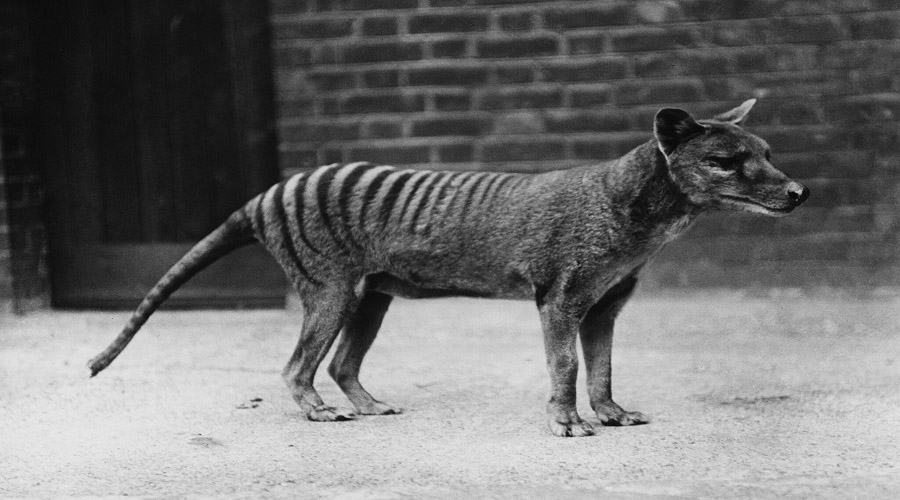
Thylacine (Tasmanian Tiger)
This creature, commonly known as the Tasmanian Wolf, but actually a marsupial, was neither related to cats nor dogs. Its distinct pouch was a feature shared with other iconic Australian animals such as the koala, wombat, and kangaroo. The marsupial females typically have pouches to nurse and safeguard their offspring, but it was peculiar that the Thylacine males also possessed pouches. The pouch in male Thylacines served as a protective covering for their external reproductive organs during their movement through dense foliage.
In addition to its other marsupial traits, the Thylacine possessed powerful hind legs that exceeded the length of its front legs, and a sturdy, stiff tail reminiscent of a kangaroo’s. These physical characteristics rendered the Thylacine’s gait ungraceful, preventing it from sprinting. Remarkably, the Thylacine could stand erect on its hind legs while using its tail as a tripod support, mimicking the behavior of a kangaroo. When threatened or disturbed, the Thylacine employed its hopping ability, which allowed it to travel short distances with great speed.

